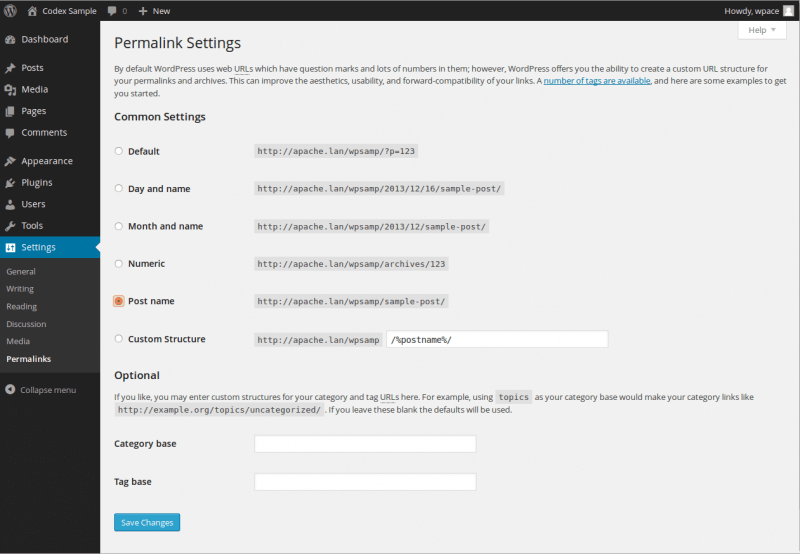WordPress is the most popular Content Management System in the world with the latest statistics showing 60% market share.
This means that there are a lot of websites out there making a very wise choice as WordPress is a secure, easy to use CMS that is well supported by its inventors Automattic. It also has a vibrant community of developers producing high quality commercial and open source plugins and themes.
While WordPress is an excellent choice for virtually any type of website such as online shops, brochure websites, corporate websites etc, the standard installation needs some adjustments that are essential for the search engine optimization of the website to maximise the ranking of your website on search engine results pages. There’s nothing mysterious or difficult but just some important changes that will help improve web traffic and search engine position.
Here are, in our opinion, the 3 most important tips for setting up WordPress SEO.
Some tips for setting up WordPress SEO
Setting up the permalinks for simple URLs
Once you have installed WordPress, your first task is to change the permalinks. This changes WordPress’ standard link pattern which includes question marks and numbers. This is not helping Google index your website and helping it and your website users understand what your website is about
Google are very clear on the subject (ironically at the web address: https://support.google.com/webmasters/answer/76329?hl=en ):
A site’s URL structure should be as simple as possible. Consider organizing your content so that URLs are constructed logically and in a manner that is most intelligible to humans (when possible, readable words rather than long ID numbers). For example, if you’re searching for information about aviation, a URL like http://en.wikipedia.org/wiki/Aviation will help you decide whether to click that link. A URL like http://www.example.com/index.php?id_sezione=360&sid=3a5ebc944f41daa6f849f730f1, is much less appealing to users.
WordPress makes complying with this tip very straightforward.
Log in to your WordPress website and Go to Setting > Permalinks. Change Changing the setting to Post Name (/%postname%/) and that should be that. This automatically adds the Page title with hyphens as links to the URL.

Some like to use /%category%/%postname%/ as their setting but can cause a few issues when content for categories aren’t optimized, and creates extra work as you need to categorize everything, even less important pages.
See this link for more information: https://codex.wordpress.org/Settings_Permalinks_Screen
Install an SEO plugin to help you optimise your web content and title tags
Another important feature of your website is your website content and how it is structured for SEO. The best way of tackling this is to use one of the highly regarded plugins such as Yoast or All In One SEO Pack that help you structure the title tag, provide feedback on page contents and suggestions for improvement.
Yoast is particularly useful for content optimisation as it has a simple traffic light system for rating content for SEO for the overall page, plus individual areas for concerns such as heading structure, uses of images, keyword density etc.
See this link for a comparison: https://www.elegantthemes.com/blog/tips-tricks/wordpress-seo-vs-all-in-one-seo-pack-which-is-the-best-seo-plugin
Improve website speed and mobile usability
All websites need to have a responsive design that is mobile friendly and also fast loading. Google has online tools for testing mobile usability and website speed as it considers both to be important ranking factors. The mobile usability is a feature of your theme and you should either develop or choose one that is mobile friendly.
There are individual actions you can take to improve your website – this is how quickly your website downloads to display for a user. The longer it takes, the worse the user experience and this is where Google takes a keen interest. While a faster loading website doesn’t guarantee higher rankings, a slow loading website will definitely negatively affect your ranking as it is something that Google can measure easily and use as part of the algorithm to rank websites.
There are some measures you can take to improve the website speed:
Optimise your images – losslessly compress all the images on your website so the file size reduces without having too much impact on the display quality. A good graphics package will do that for you but there are also excellent online services such as tiny PNG where you can upload images and it optimises your images – https://tinypng.com/
Install a caching plugin – the main function of these plugins is to create a snap-shot static html cache of your webpages which are served to visitors. This means that your website displays quicker as the web pages. W3 Total Cache, WP Super Cache and Autoptimise are good choices but visit this link to see alternatives: http://www.designbombs.com/top-wordpress-caching-plugins-compared/
Add compression code to your .htaccess file – your caching plugin might already do this but adding compression code to your .htaccess file makes use of modern browsers built in features to interpret compressed files – see this link for more information GZip compression test and code: https://www.giftofspeed.com/enable-gzip-compression/
These are all technical and setup features of your search engine optimization process. As important is your website content, keywords and backlinks which we will cover in future blog posts.






